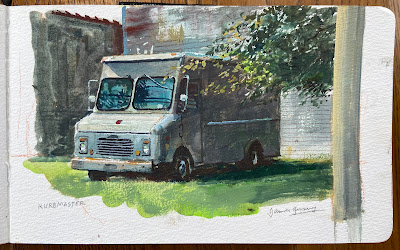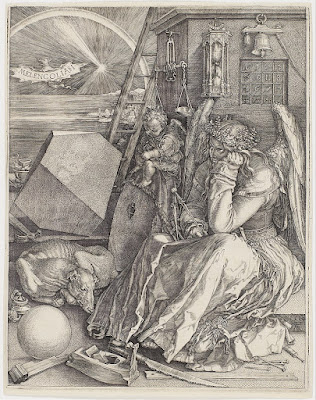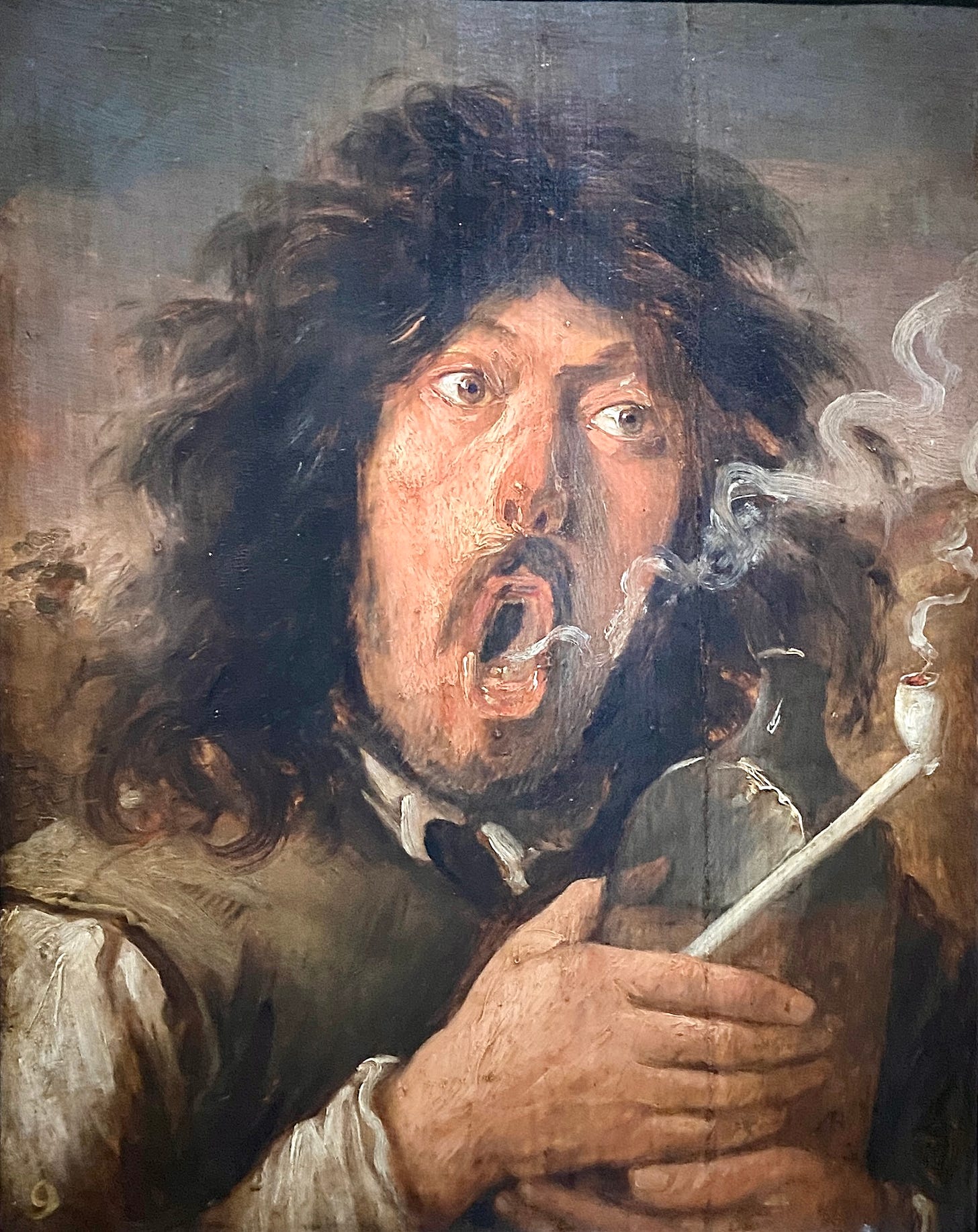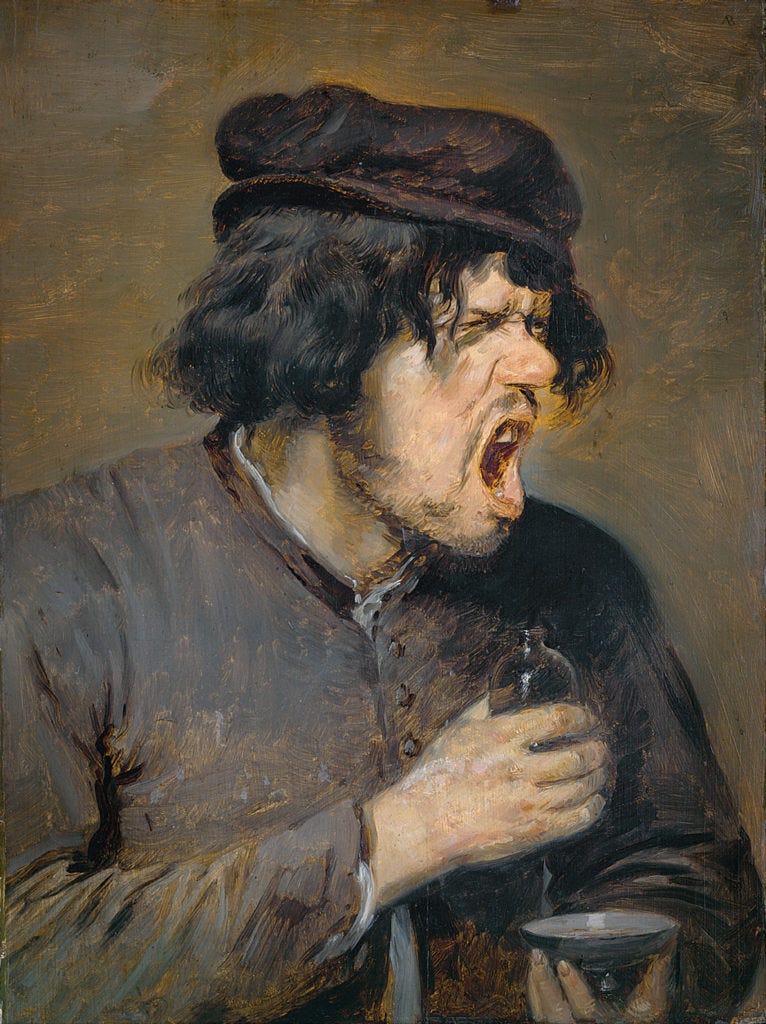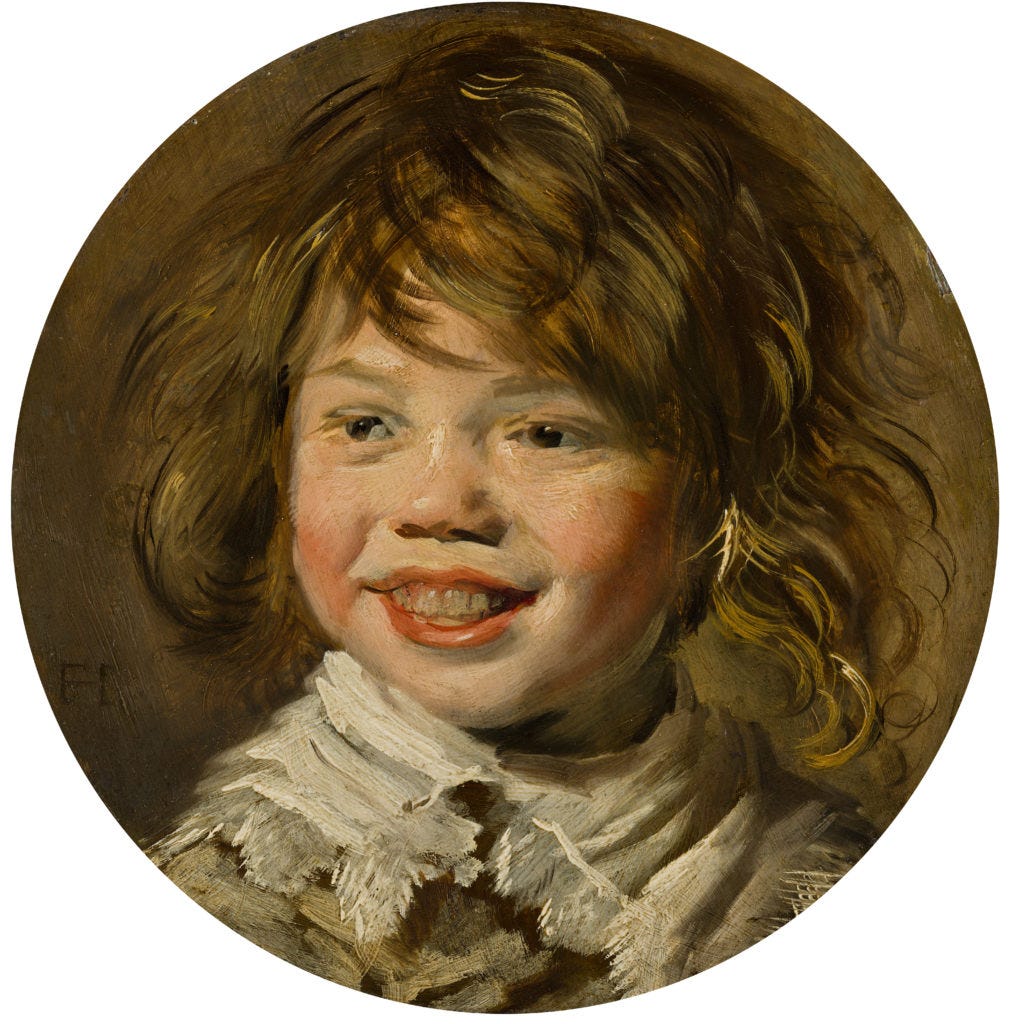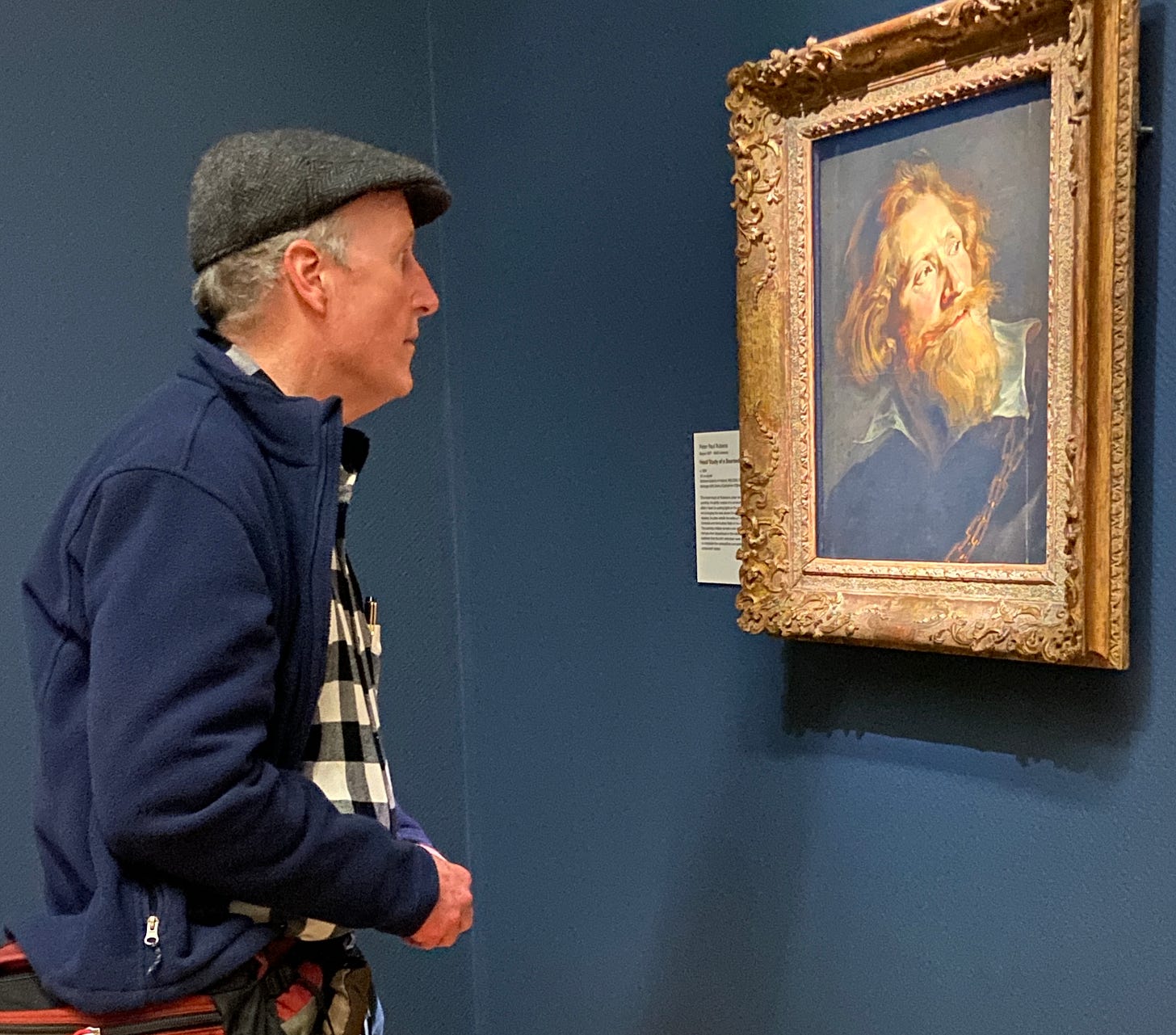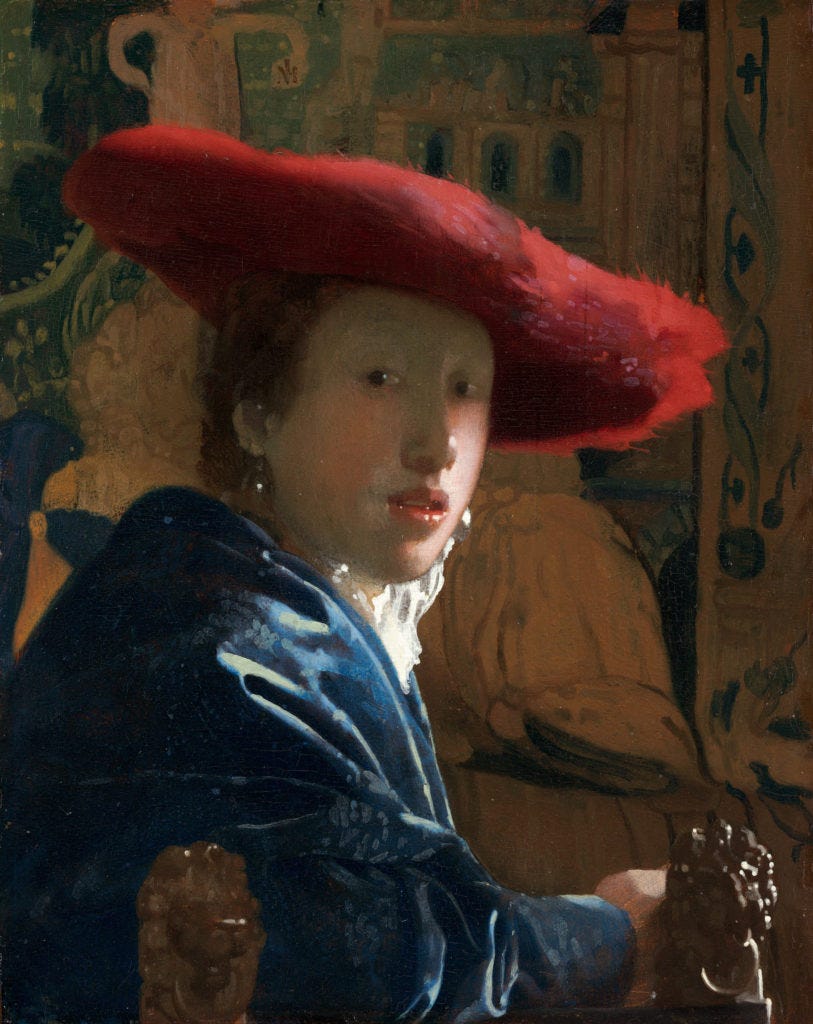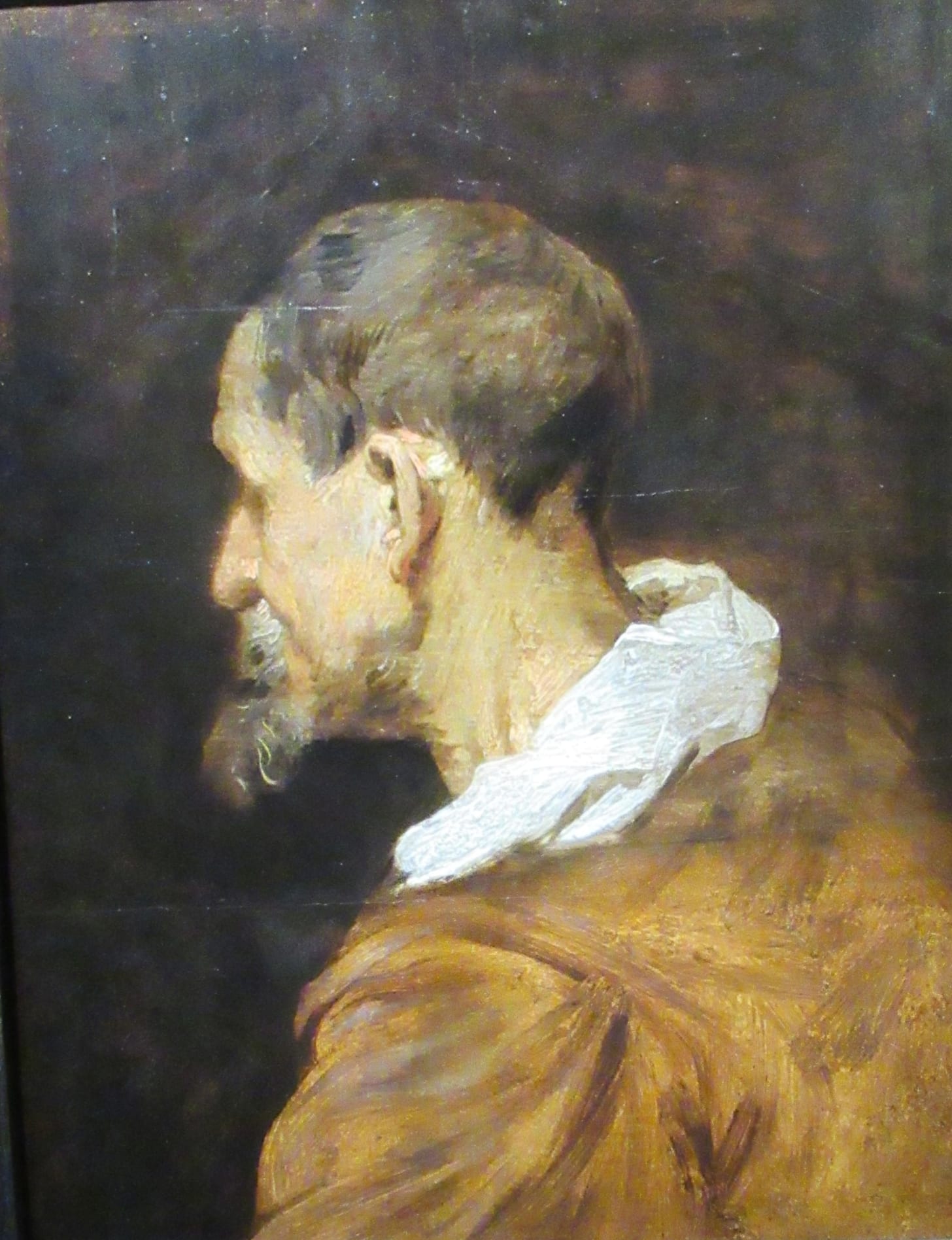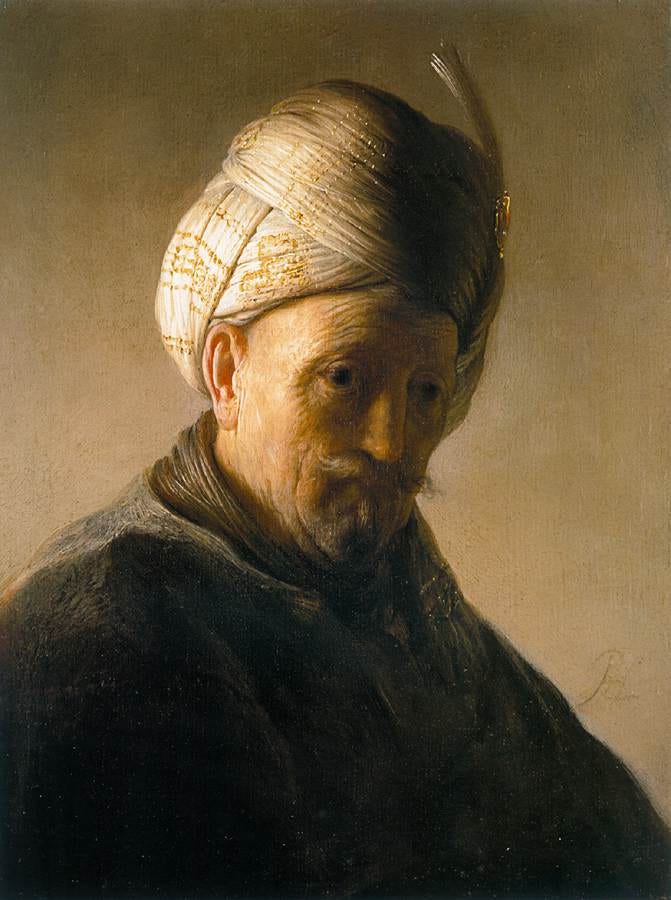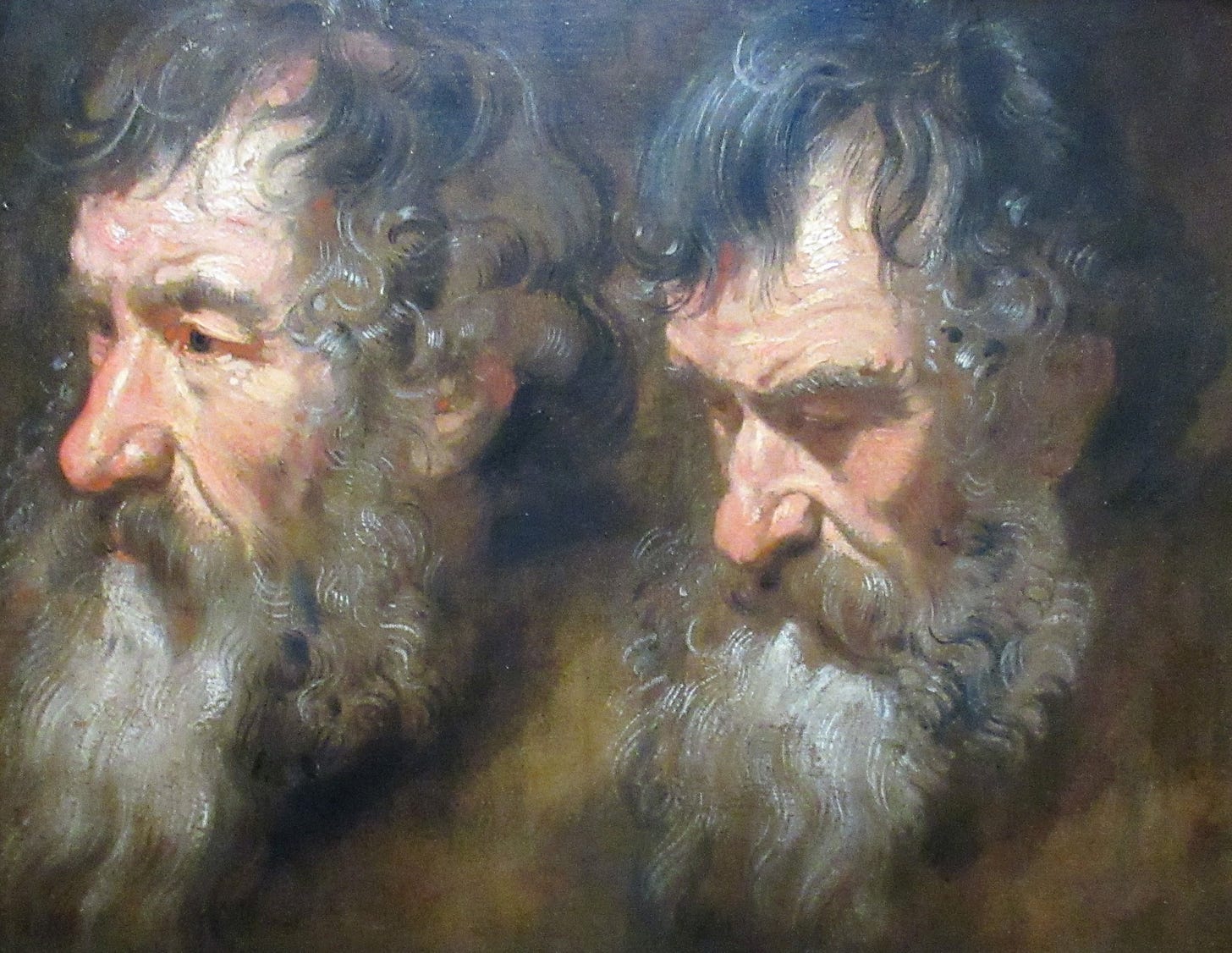Not all head paintings are intended as portraits of specific individuals.
Joos van Craesbeeck, 1605/6-1660/1 The Smoker
Sometimes the goal is to capture a facial expression, a character type, a weird angle, an exotic costume, or an exploratory lighting arrangement.
Adriaen Brouwer, The Bitter Potion, 1636-1638, Städel Museum, Frankfurt, Germany.
In the 16th and 17th centuries, Dutch and Flemish painters developed a whole series of experimental modes of head painting.
Frans Hals, Laughing Boy, 1625, Mauritshuis, The Hague, Netherlands.
There’s a lot of fun mixed in with serious art-making.
On Tuesday we visited the National Gallery of Ireland in Dublin, which is hosting an exhibition of these amazing head paintings, known by the Dutch and Flemish artists as tronies.
Johannes Vermeer, Girl with a Red Hat, 1665, National Gallery of Art, Washington, DC.
The name of the exhibition is Turning Heads: Rubens, Rembrandt and Vermeer.
The exhibition includes head paintings by other well known painters of the day, including Anthony van Dyck (above), who painted this head study between 1618 and 1620.
Several of Rembrandt’s tronies explore characters in exotic costumes lit by strange, mysterious lighting.
The show will be on view through the 26th of May, 2024.











